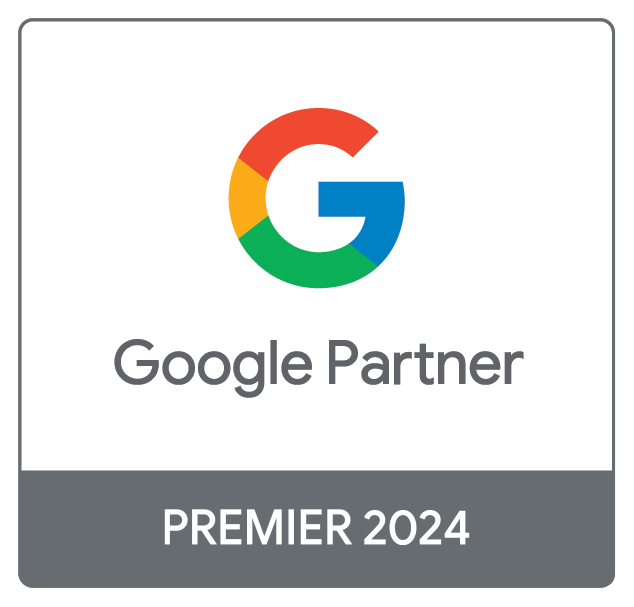All B2B companies need a lead-generation strategy because establishing a strong pipeline will ensure you maintain a steady growth rate.
 B2B sales cycles can be long and generating new leads is considered a major challenge to overcome for B2B marketers.
B2B sales cycles can be long and generating new leads is considered a major challenge to overcome for B2B marketers.
All B2B lead generation strategies will help you attract more prospective clients to your business. You can solicit leads in numerous ways, so let’s take a look at some of the best lead-generation strategies.
1. Content marketing
If done right, content marketing can be a great source of B2B leads.
When you publish valuable content that informs, educates and entertains your target audience, you earn their trust. And it’s much easier to convert leads once you’ve gained this trust.
- 75% of B2B buyers say that content significantly impacts their buying decision
- 62% say they can make a purchase selection based solely on digital content
- Over 80% of B2B buyers view at least 5 pieces of content during the purchase process, and half of them view more than 8 pieces
There is a lot of content consumed before B2B buyers make contact with a sales team. By producing content frequently, you can cater to your audience’s information demands, gain their trust and move them along through your sales funnel.
In order to be successful, use different types of content to attract and engage with your audience, e.g. blogs, videos, infographics, research reports, FAQs, etc.
How do you actually generate leads through content marketing?
Lead magnets are one of the greatest ways to generate B2B leads. A lead magnet is a piece of valuable content (a PDF or maybe a recorded webinar) that can be viewed, gated or downloaded in exchange for an email address or other contact info.
Lead magnets come in different formats but they all must provide value above what’s available for anyone who visits your website. The more valuable information a lead magnet contains, the more leads it’ll generate.
Some of the most effective lead magnets include:
- E-books
- Webinars/podcasts
- Whitepapers/reports
- Free trials/demos
- Free tools/calculators
- In-depth case studies, etc.
All content marketing techniques should be aligned and working together. For example, you can publish one chapter of your e-book in your blog and use other chapters as a lead-magnet to generate leads. You can publish a video extract from your webinar and use the whole webinar as a lead-magnet. Whatever you choose, make sure you can pinpoint its value during the lead-generation process.
2. Search marketing
The modern B2B buyer does their own research, mainly online, making 8 to 12 online searches before they even contact the brand.
Search marketing, both SEO and PPC, can help B2B brands gain visibility in search engines and increase relevant traffic to the website.
SEO is arguably one of the most valuable long-term strategies for generating B2B leads. In order to succeed with SEO, you need to have a strong content marketing strategy that provides information valuable to your target audience. You need to realise and understand the content needs and expectations of your target audience in order to design an effective strategy. High quality content is one of the most important factors for the success of your SEO strategy. And don’t forget to optimise your website/each piece of content for SEO: conduct keyword research, optimise titles, descriptions, heading tags, alt tags, make sure your pages are loading quickly, etc.
Learn how to design an effective content strategy
As SEO might be a slow process and you might not be getting the desired results as quickly as you’d like, if your budget allows, consider including PPC campaigns in your digital marketing efforts. PPC ads are a great opportunity to gain attention from interested users who may have never found your products/services otherwise. It’s a great tactic to get in front of your target audience at every stage of their journey, for building brand awareness, generating leads and driving conversions
It’s important to note that SEO and PPC complement each other and they work best when executed together. For example, you can run paid search for any organic keywords for which you’re not ranking highly.
Don’t forget that search marketing is highly effective at bringing relevant traffic to your site and making people aware of your brand, products or services. You also need lead magnets and lead nurturing techniques to actually convert them into leads and customers.
3. Social media marketing
While there is no doubt that social media is a powerful marketing tool. B2B companies know the potential of social platforms, generating leads through social media is not easy. It requires a well thought out strategy.
75% of B2B buyers use social media to support their purchase decision.
When done correctly, B2B social networking platforms can boost your business by increasing your brand’s visibility. There is no better way of gaining customers’ trust and building relationships than using social platforms. But social media is great for not only brand awareness and building connections with your potential customers, but also converting followers into leads.
Here are some strategies for capturing leads coming through social media:
- Share relevant content and attract users to your website
- Promote lead magnets/gated content
- Create contests and giveaways
- Offer a free trial/demo
- Use calls-to-action
- Join groups and conversations and share your knowledge
- Use paid ads to target your audience by location, demographics, industry, job title, etc.
Every social media network is different and serves different purposes. And the people that use it have different interests and priorities. So, you need to understand social media platforms and choose the best ones for your B2B business in order to grow and expand. LinkedIn consistently ranks the highest among social media platforms for its B2B lead generation value, followed by Facebook and Twitter.
It’s also important to note that a social media strategy should be integrated with your content marketing efforts. By producing high-quality, original content, you give potential customers the incentive to engage with your company on social media and, as a result, convert followers into leads.
4. Email marketing
Email marketing is one of the few online marketing channels that has stood the test of time and is one of the most effective B2B lead generation strategies.
By utilising email marketing campaigns as part of your B2B lead generation strategy, you have the opportunity to contact potential customers in a personal way that also allows you to expand on the benefits of the proposed business relationship. You can share your latest blog posts, invitations to webinars, testimonials, case studies or special offers.
Marketing automation has become highly effective. While traditional newsletters and email marketing campaigns are still important, the ability to capture more data on users and use behavioural-triggers has enabled B2B marketers to get a lot smarter. Also, send highly targeted emails to leads that are specifically to them. Automation is the key to successful email marketing, triggering emails based on your contacts’ actions so that emails are timely and relevant rather than generic and an annoyance.
Use segmentation in your email marketing campaigns to generate leads. Segmentation allows businesses to place clients into different lists. They can then target specifically with the content and offers that are most relevant to them. These tools and more can help maximise your B2B lead generation through comprehensive email marketing campaigns.
5. Website conversion rate optimisation
Your primary goal is to convert your website visitors into leads, so B2B websites have to be properly optimised. Conversion rate optimisation helps increase the chances of your leads converting on your offers. Meaning you’ll get more prospects from your B2B lead-generation campaigns. Static pages, landing pages, forms, calls-to-actions – all elements where prospects might convert, should be optimised.
CRO helps you to improve your website and get users to complete a defined goal. That can be signing up for a demo, downloading a whitepaper or signing up for the newsletter. CRO is vital for successful B2B lead generation. It’s essential that you convert at least some of your website traffic into leads.
Here are some extra considerations for your B2B lead-gen strategy:
- Mobile optimisation – a website that hasn’t been optimised for mobile will struggle to rank in search engines. It will load slowly and give users a negative experience
- CTAs – add relevant calls-to-action across your website and tell your visitors what you want them to do next. It’s the pillar of any B2B lead-generation campaign
- Lead forms – Forms have a huge impact on your conversion rates and overall lead generation results. Adding lead generation forms across your website will ensure that you are not leaving leads behind from your marketing campaigns
- Popups – By capturing users’ attention, popups help to bring back visitors who want to leave your website, with personalised intent popups proven to work best. For example, not every user will read your blog post to the end so a popup can ensure everyone sees your CTA
- Chatbots – Chatbots mimic human communication and help drive users towards a specific goal. For instance, if you want people to sign up for a free trial, your chatbot can point out its benefits and help your prospect sign up
Generating a continual stream of B2B leads is not something that happens overnight. Lead generation results come from a consistent willingness to experiment with different tactics, and to combine tactics across multiple channels. Only by experimenting can you truly know what does and doesn’t work. When you know this, you can use your time and budget more effectively to generate higher returns on your investment. Also better lead generation results overall.









